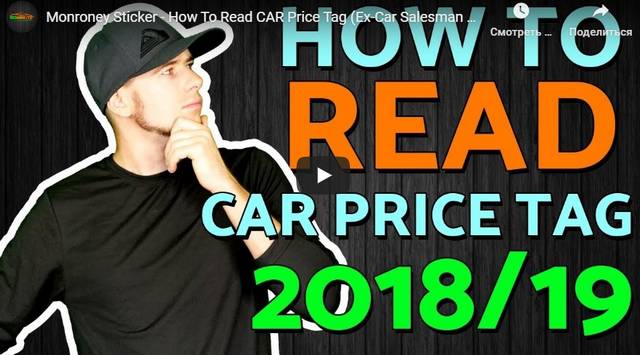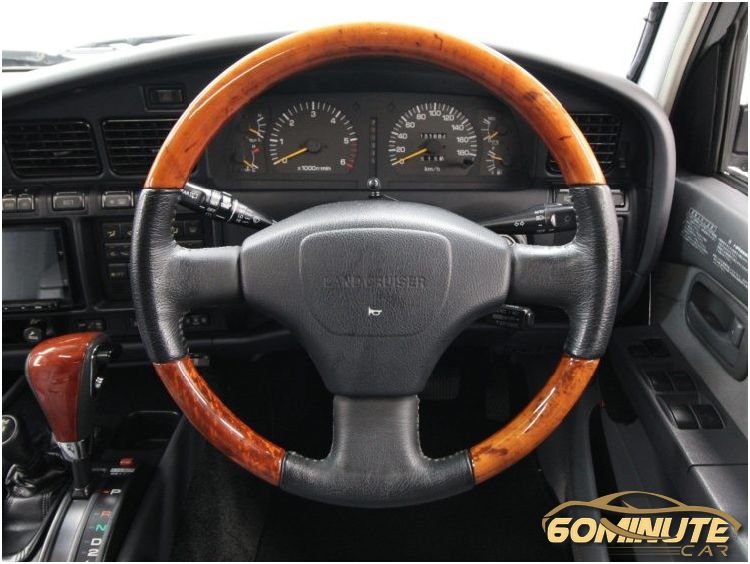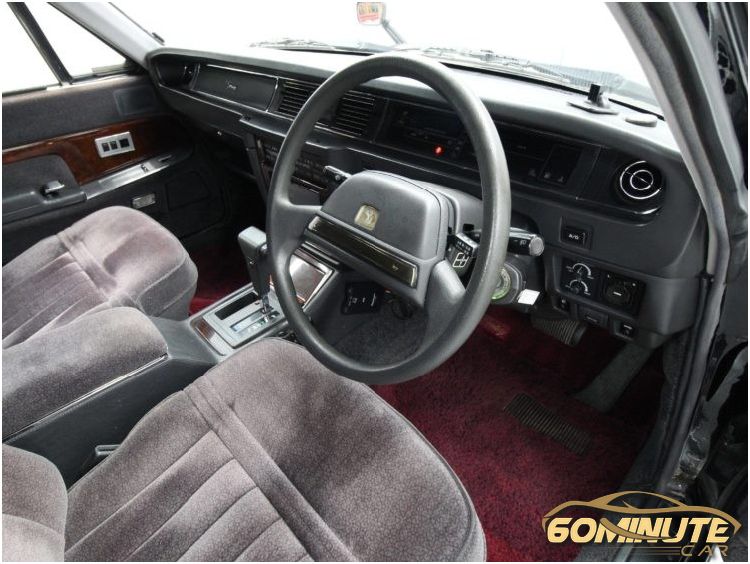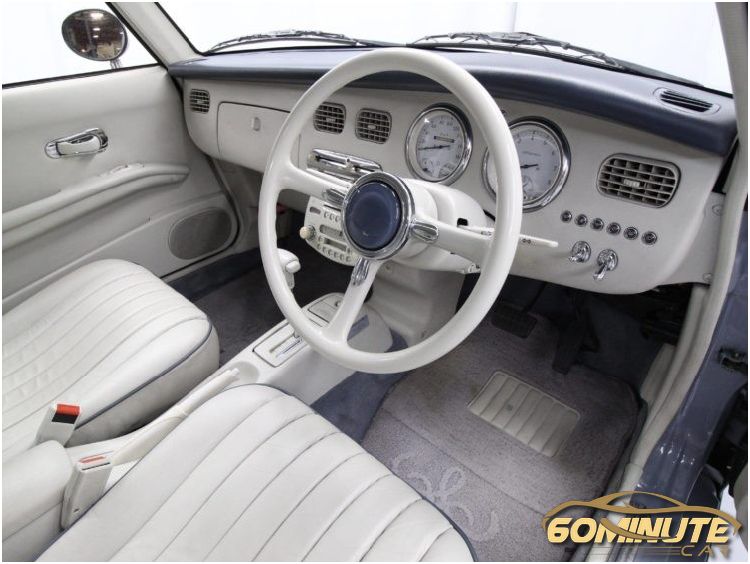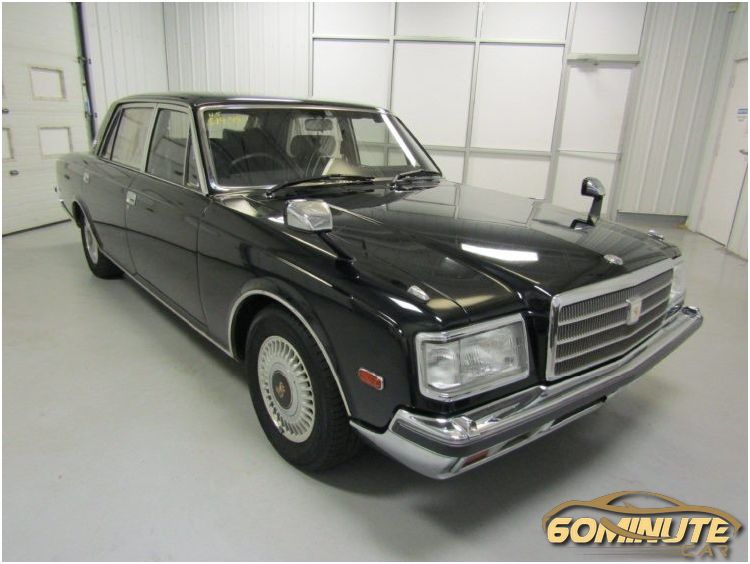How to Read Car Window Sticker
You’ve seen the stickers on new cars. They’re about the size of your standard infographic and look like a question out of 9th grade algebra. You know the type: if this car left the assembly plant on a truck at midnight and traveled 989 miles in one day, what color is it?
Looks CAN be deceiving. The stickers on new cars provide useful information to new car buyers. That’s why its important to know how to read car window stickers. Every new car on the lot has to have one. The layout of the stickers can vary from manufacturer to manufacturer but every sticker has to contain the same information. That’s the law. This is how to read car window stickers.
MODEL INFORMATION
This will generally be in one of the upper corners of the sticker. This is the basic information about the vehicle: engine size, transmission type, the color (exterior and interior) of the vehicle, and what’s known as the trim level. The trim level is expressed in terms such as Honda XYZ or Subaru GX. These can be confusing. What these letters designate are features the car in front of you has above the base model.
STANDARD EQUIPMENT
You’ll find this beneath the model information. Its a list of equipment that’s included in the Manufacturer’s Suggested Retail Price (MSRP). It will be listed by category, such as Exterior, Interior, Mechanical, Safety/Security, and Convenience/Comfort.
WARRANTY INFORMATION
Usually next to the list of Standard Equipment. The warranty information tells you the length of the vehicle’s bumper-to-bumper and drive train warranties. This is also where you will find any additional information, such as roadside assistance or special maintenance programs. Pay special attention to the warranty information. You’ll need to know what’s included when the dealer wants to sell you extended warranties.
OPTIONAL EQUIPMENT
Usually listed below the Standard Equipment. This listing will tell you the factory installed options on the vehicle. (This is also where you’ll begin to learn what those trim level codes mean.) These options can be priced as a bundle or individually. For example, you might read “Passenger Comfort Package.” The sticker has to detail what that includes, possibly a make-up mirror, special lighting, fur-lined door handles. This will be priced as a bundle and be included in the total price of the vehicle.
TOTAL PRICE BREAKDOWN
This is usually found next to the equipment breakdown. This list includes the base price of the vehicle, the cost of any optional equipment, the destination charge (which is the cost of transporting the vehicle from the factory to the dealership), and any environmental costs. These costs are placed on vehicles by the Environmental Protection Agency (EPA). If a vehicle gets less than 22.5 miles per gallon (MPG) and is not considered a truck or SUV, it gets taxed. The lower the MPG, the higher the tax. You might also see the total price of the vehicle here but the total price also has its own special place on the sticker.
WHERE THE PARTS ARE FROM
Usually found at the bottom of the sticker. This will let you where the car was assembled and how it got to the dealer (truck, rail, ship). It can also detail where the parts were assembled. The parts breakdown will be in percentages, such as US parts 65%, Mexico parts 30%, Japan parts 5%. Not all stickers have this breakdown. If it’s important to you to know where the parts are from, go to the National Highway Traffic Safety Administration site. The NHTSA has parts information on vehicles from 2007 to the present.
TOTAL PRICE
The total price is generally in the bottom center of the sticker and is highlighted. This is the MSRP of the vehicle. It might end up being the total price you pay or it might not. This total price section gives you a starting point for negotiations.
FUEL ECONOMY
This is another mandate from the EPA. This section will let you know how fuel efficient the vehicle is and if, in the EPA’s opinion, you’ll be spending less for gas by purchasing this vehicle rather than a less-efficient vehicle. That Quick Response (QR) code in this section will take you to the EPA website, where you can enter your personal driving information. The site will then provide you with custom fuel economy information. Another reason why it’s important to know how to read car window stickers.
SAFETY RATINGS
The information here comes from the NHTSA. It tests a number of vehicles each year and issues safety ratings based on crash test information. The NHTSA doesn’t test every make and model so this section might be blank. If that’s the case, you can go to the Insurance Institute for Highway Safety (IIHS) website for information gathered about the particular vehicle you’re considering.
SUPPLEMENTAL WINDOW STICKER
Now you know how to read car window stickers. Here’s how to read the smaller stickers sometimes placed next to the big ones. These supplemental window stickers list accessories added on by the dealer. These could be anything: a luggage rack, interior protection coating, or pinstripes. You might want some or all of the add-ons. You might not. Be aware that these accessories are included in your total price.
That’s how to read car window stickers. It’s worth the extra time you’ll spend on the lot looking at this information.
My name is Den I used to work at the biggest car dealership in the country. I left and now I’m teaching people how not to get F•••ed when buying a car. So today we’re gonna talk about Moroni stickers and this is a big blue sticker that you see on the side of the window that has car price options or origin of manufacture parts, origins. All that good stuff. So we’re gonna go over everything today and how dealer’s. You think you can’t get scammed with a piece of paper that has that comes directly from manufacturer. But yet there is a way you can still get F•••ed. I know you’d think it was F••• proof. It’s not. Dealers will always find a way to bend you over and and do things to you. So first model information. This is where you will find model information for the vehicle name of the car. It tells you the engine, the transmission combination that comes with that engine. It tells you exterior color as you year and model of the car. So it’s just the basics. Number two, standard equipment. This is where the Windows Ticker lists all the items and features that are included with the car key exterior features.
Into your features.
And it also comes with mechanical or electrical features such as backup cameras or heated seats or whatever. Warranty information. So it’s going to have a couple of different things first. You might see a line that says bumper to bumper warranty. It doesn’t necessarily means bumper to bumper. OK. You have to read Warrantee also power train warranty for sixty thousand miles or on key as in Honda is actually a hundred thousand miles, which is pretty cool. They don’t really cover what you think they’re going to cover. OK. Most things that do break in those situations are not are going to be moving parts. And a lot of times power train warranties don’t actually cover moving parts. It is pretty ridiculous. I know, but it’s true.
So first, if you’re buying a car and you’re looking into warranty, you shouldn’t be buying that car. Think about this. If you’re getting married and you think you’re wife or husband is going to cheat on you and you need some kind of a warranty, you shouldn’t be getting married to that person in the first place. I mean, it’s just common sense. OK. If you think you need warranty, stay away from that car. Number four, pricing information.
This is where you will see the price of the vehicle and delivery charge, which has already been paid. OK, if dealership is asking you to pay some kind of delivery, charge your destination, charge your bullS••• like that or transportation fee. It has already been paid. Do you see the car at the dealership? Yes. It’s already been paid. If the car you want to get is not that the dealership, then first off they’re doing in trade. Then it’s free. Second, the dealership has actually already including the price of the delivery in the bottom line of the of the price of their car.
Ok. So don’t fall for this. And if at any point you want to deliver a car, I delivered the full size F-150, four doors from New York to Washington across the country for seventeen hundred dollars. So if you’re that’s across the F•••ing country for seventeen hundred dollars, if you’re getting charged more than that. I mean really look at it. Look into it because ninety nine percent you’re getting scammed because I had situations where we were charged. Three thousand dollars for a car to be brought. Fifteen hundred miles. Three thousand dollars. Price of delivery. A thousand dollars markup. Two thousand dollars. So, yeah. Number five. Pass Origin and country of manufacturing. So that’s pretty simple. Number six. This is the total price of the car. MSR P Manufacturer’s suggested retail price. This already has 30 percent of profit. So if you’re not getting at least 30 percent off the car, you’re not getting a great deal. It’s just that simple. And I’m talking about low level cars. If you’re trying to get top of the line car, it will easily have 40 percent, 45 percent pure profit. Just giving you a heads up. If you if you think you’re getting a great deal at three thousand dollars off or $5000 cash back, unless you’re buying a twenty thousand dollar car, you’re getting F•••ed without lube. I mean, you’re getting you’re getting railed hard. Number seven, fuel economy. This is going to tell you just city and highway miles per gallon, which is pretty cool. However, it’s going to say what you’re expected to spend on gas on a yearly basis.
That part is complete bullS•••. Kate, just give me your heads up. You’re going to spend more QR code. This is just another sales tactic which you can scan a QR code on the sticker and you can read and try to. They’re going to try to sell you the car which you’re riding by. It doesn’t really make sense, but pretty much is just a tactic to sell you on their car again. Number nine, safety ratings. The difference between a three and a half star or four star and five star rating is the difference in the accident between you were sleeping in a refrigerator, in a body bag, in a morgue or in a bed. That’s the difference between four stars and five stars. That’s what it really boils down to. Number 10. You got to compare Divin on the sticker to VIN on the car and also you got to compare the exterior and interior colors on the sticker to the car, because I’m not saying it happens often, but sometimes dealerships will actually put wrong stickers on the cars because who knows better? You know, most customers are not professional car buyers is just a bottom line. So yeah, if they if dealership can scam you, they will scam you. Their job is to make money. Their job is to do everything they can if they have a chance to scam you. They will if they have a chance to fool you or do something sneaky behind your back. They will absolutely do it. That’s their job. Okay. Here’s the most important part. Number eleven.
There is a dumped them sticker which looks like this right here. This sticker is more profit out of thin air for the dealership. A manufacturer has MSR P manufacturer’s suggested retail price. This is what they suggest the car should be sold. However, a lot of dealerships will put addendums sticker on the side, which in this example is going to have market adjustment for four thousand four hundred ninety nine dollars.
What the F••• is that? What the hell’s market adjustment? It’s money out of pure air. It doesn’t mean anything. It literally doesn’t mean anything. E.t.c. H. That means window etching. They’re charging two ninety nine. Do you know how much you can get window etching for twenty nine dollars on eBay and you can do two cars with that two cars. So window etching is a complete scam. There’s actually S••• on the lawsuits against dealerships and I have no idea how they’re still doing it. There’s lawsuits piling up on one and dealerships are completely like ignoring that and they’re still doing it. So window etching or body parts etching is just a sticker with with a little bit of acid. The will that you will put on the body part, metal, plastic or glass. And it’s supposed to help police to identify your vehicle.
If your vehicle is found, there is a VIN number on it. OK, if your vehicle isn’t found, it’s not found.
It’s just simple as that. Your vehicle is not found. It’s in body parts. I like it’s gone. The window is over there. The head lights are over there, the bumpers over there, the transmission is over there. Your car is gone. Nobody’s gonna chase after your car. If your car is not found within 30 days, your insurance company will pay you on day thirty one. Simple as that if your insurance company is not paying you on day. Thirty one, you should really start talking to lawyers. OK. So I think I’m done here. Stay away from addendums, stickers. And if you’re looking to buy a car, hit me up. You know, in comments section or in the link below, I actually have my own Web site. So, yeah, this is then with 60-minute car. I’m signing out and I’ll see you on the Internet.

